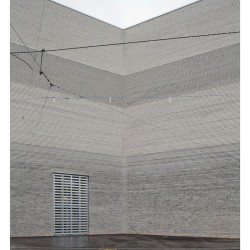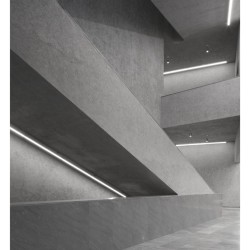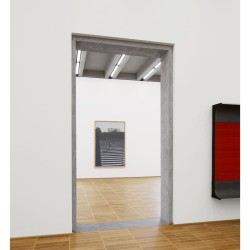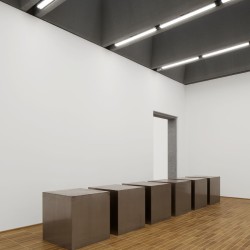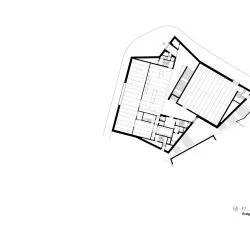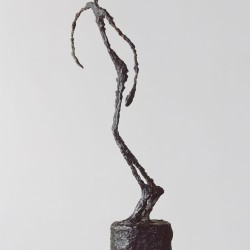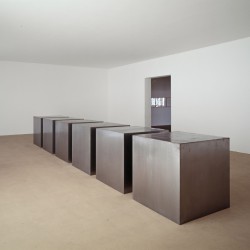The new building of the Kunstmuseum Basel will open mid April with the special exhibition Sculpture on the Move 1946-2016
_
In April the Kunstmuseum Basel, which houses one of the largest and oldest public art collections in Europe, will become richer in space with the opening of a new extension. The main building (opened 1936) and the Kunstmuseum Basel | Gegenwart (opened 1980), which is sited in close vicinity on the banks of the Rhine, are to be complemented by the new building. Designed by renowned Basel-based architects Christ & Gantenbein, the extension is connected by an underground passageway to the main building across the street.
Architecture
Through many of its elements, the new building cites the rich architectural language of the main building. This is manifested in the monumental stairway with a central circular skylight, the sgraffito in the open areas of the foyer and the staircases. This reference to the historical buildings also reflected in the colour qualities of the brick facade as well as the highly refined details in the materials used. Despite reverence to the main building, the new extension is also a standalone building, which has its own contemporary architectural language. Its polygonal ground plan comprises a series of well-proportioned rectangular exhibition halls. Particularly impressive are the expansive hallways (around five metres in height) that make up the basement level of the building. The new building blends harmoniously into the heterogeneous structure of the of St. Alban quarter and radiates, quite literally, through the LED frieze woven into the facade, out onto the city.
_
Inaugural exhibition Sculpture on the Move 1946-2016
With 2.740 square metres of additional space primarily dedicated to the museums special exhibitions programme, the new building will mark its opening with the survey Sculpture on the Move 1946-2016, curated by Bernhard Mendes Bürgi. The exhibition focuses on sculptural art between the end of World War II up until present day, and will map the mediums extraordinarily dynamic evolution: the classical idea and form of sculpture grows more flexible and abstract as some artists integrate the trivial stuff of everyday life into their art, though, on the contrary others have returned to the figurative tradition in an effort to set the genre on a new solid foundation. Selected works from the collections of the Kunstmuseum Basel and eminent pieces on loan from international museums and private collections will be brought together for a dense and exceptionally rich survey of sculpture.
–
The exhibition opens with late works by Constantin Brancusi and Alberto Giacometti, two defining artists of the twentieth century, in the skylit galleries that Christ & Gantenbein architects have created on the second floor of the new building. It continues with a loosely chronological arrangement highlighting various thematic movements in sculpture between the 1940s and the 1970s, with exemplary works by Alexander Calder, Hans Arp, Max Bill, Henry Moore, Louise Bourgeois, Pablo Picasso, Eduardo Chillida, David Smith, Jean Tinguely, Claes Oldenburg, Duane Hanson, John Chamberlain, Donald Judd, Carl Andre, Joseph Beuys, Mario Merz, Bruce Nauman, Eva Hesse, Richard Serra, Robert Smithson, and others. The presentation then moves to the ground floor of the new building, where sculptural works from the 1980s by Peter Fischli and David Weiss, Robert Gober, Charles Ray, Mike Kelley, Jeff Koons, Katharina Fritsch, Franz West, and others will be display. The survey concludes in the Museum für Gegenwartskunst with a display of significant developments between the 1990s to present day, featuring sculptures by artists such as Gabriel Orozco, Matthew Barney, Absalon, Damien Hirst, Danh Vo, Monika Sosnowska, and Oscar Tuazon.





